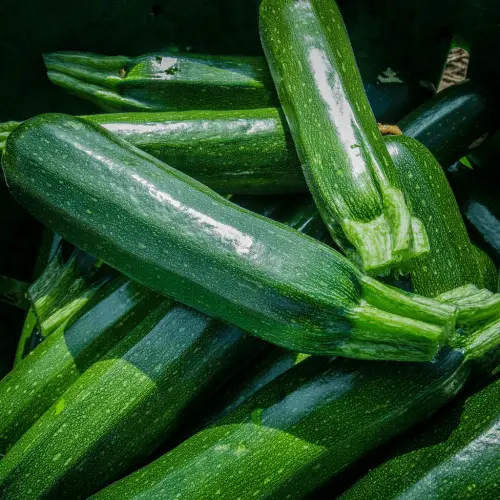Have you ever wondered about the difference between zucchini and green squash? Some people say these are the same; however, there are some differences you should be aware of!
Squash is usually regarded as a vegetable based on how it is cooked or prepared in meals. However, it is actually a fruit according to botanical categorization.
It is considered healthy and versatile, and you can prepare hundreds of recipes with it. There are different types of squash and most people differentiate them according to usage or seasonal bloom. They identify certain squash types as summer or winter squash. Among these types would fall zucchini and green squash. But why mention them separately? Isn’t zucchini a green squash? Well, it is, but it isn’t the only green squash type, and you’ll understand the difference as you read further.
Summary Table
| Zucchini | Green Squash |
| A summer squash that comes in different skin colors – dark green, light green, deep yellow, or orange | Can either be a summer or a winter squash |
| Most common variety is the cylindrical type but it also comes in a round shape | Comes in cylindrical, round, or round flattened shapes |
Definitions

Zucchini is a summer squash and it comes in varied green, orange, or yellow (some say golden) skin colors with an off-white flesh. It comes in long and often cylindrical shapes, similar to the shape of a cucumber. When it comes to the culinary context, zucchini is often prepared as a vegetable since it is cooked and served as a savory dish. In the botanical context, a zucchini is a fruit: a type of berry called “pepo” that sprouts from the zucchini flower.

Green squash, in general, is a type of squash that can either belong to the winter or the summer squash types. Green squash comes in varied sizes and shapes, like the kabocha squash, which is a round, flattened green winter squash, and the zucchini, which is a cylindrical green summer squash.
Zucchini vs Green Squash
If we want to be technical about terminologies, zucchini is a type of green squash that belongs to the summer squash family. However, when we talk about green squash in general, there are several types that belong to either the summer or winter squash groups.
Zucchini, like all other green squash types, originated in the Americas.
Nonetheless, the varieties referred to as “zucchini” were cultivated in Northern Italy around the mid-19th century. Similar to some green squashes, the zucchini is part of the Cucurbita pepo species. However, zucchini not only comes in dark or light green colors but also deep yellow and oranges.
When peeled or chopped, you’ll see that the zucchini has an off-white flesh while some green squash types like the kabocha have orange flesh.
Squashes are usually harvested when they are smaller and younger since they tend to lose their flavor and tenderness when they get bigger in size.
Zucchinis are ready to pick by mid to late summer. However, green squashes may be harvested in the winter or summer, depending on the type of squash. Summer squashes are usually picked when they reach 6 inches to 8 inches long. Winter squash is ready to harvest when the skin hardens.
When it comes to nutrition specifics, 100g of raw green squash is about 16 calories, 3.4g of carbohydrates, 1.1g of fiber, 0.2g of fat, 1.2g of protein, 2.2g of sugars, and 95g of water. Squash has 12% of the daily recommended amounts of riboflavin, 17% of vitamin B6, and 20% of vitamin C.
On the other hand, zucchini has 16 calories, 3.4g of carbohydrates, 1.2g of protein, and 1.1g of fiber; however, it has 1.7g of sugar and 0g of fat. It also has 28% of the recommended daily value of vitamin C, 11% of vitamin B6, along with 8% riboflavin.
Both zucchinis and squash have a variety of health benefits. For instance, squash has about 10% of the daily recommended amount of fiber, which lowers cholesterol, aids digestion, maintains low blood pressure, and prevents colon cancer.
On the other hand, zucchini has lots of vitamin C, a powerful antioxidant and anti-inflammatory.
These veggies also have potassium, which lowers blood pressure. You’ll also find manganese in these fruity vegetables; it helps in the production of collagen for healthier skin.
Green squash can be cooked as a vegetable and served fresh (like in salads) or stuffed and cooked. When it comes to zucchinis, these can be cooked, steamed, boiled, grilled, baked, barbequed, or fried. They’re often used to make bread (you’ve surely heard of zucchini bread!) and other yummy dishes.





